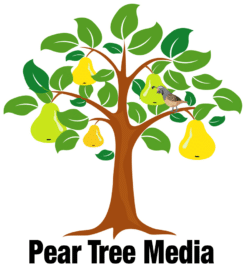Table of Contents
You have to capitalise email subjects carefully whether it is a personal or a business email. The subject of an email is the only chance of getting the recipients to open your email and read. You will have wasted time and resources in writing the email if the recipients of your mail are not impressed by the subject of the mail, particularly in email marketing.
There is also no going back once you have sent an email to a client or a business prospect with a capitalisation mistake in the subject. That is the reason you have to spend some time when you capitalise email subjects.
Many people do not give importance to email subjects because they assume the contents of the email are more important than the subject. How wrong can one be? What happens when the subject of the email is not equally or more impressive than the body of the email and the target either deletes it or marks it as spam? You will have lost the only chance to impress the recipient of the email.
On opening the incoming mail, the tendency of the target is to scan the subjects of the emails and assign priority to the subjects. In the few seconds that it takes the targets to scan the subjects, they will also decide which emails they will junk or spam. Your email subject has to be impressive enough and stand out among those in the inbox to have any chance of being opened and read.
Consider any time that you spend to capitalise email subjects as time well spent. Going forward we will give you a few tips on how to capitalise an email subject. We will also look at what to avoid too.
Sentence case email subject line
Keep in mind that you are addressing a single person or a single entity in your email. You are only vying for their attention from among the emails that they have received in their inbox. A sentence case email subject comes across as more personal and casual to the target than a more formal style of the subject line.
Writing your email subject line in a sentence case makes it easier to read and comprehend. This is exactly opposite to what you would do with a blog or an article headline. In a blog headline, you would capitalise most of the words. Here you have to treat the email subject as if it were the first sentence of your email and concise introduction to it.
In a normal sentence, you would capitalise the first word of the sentence. Follow suit in the sentence case email headline. Bear in mind that you should also capitalise all proper nouns in the subject line just as you would in a normal sentence.
The sentence case email subject line is an easy style of capitalising email subjects and comes naturally to us. You will not have to review your headline for capitalisation once you have written it. Sentence case email headline also has good conversion rates.
Title case email subject headlines
We have noted before that a sentence case email subject is easy to read and understand and makes it sound more personal and casual. But there are instances when you will have to capitalise emails subjects in the title case. Although the use title case in emails subject lines is less common, they come in handy in business emails as the subject lines look more formal and professional.
Different style guides of writing have different rules on how to capitalise headlines. But most guides will have you capitalise the first word, nouns, pronouns, verbs, adjectives and adverbs. The words not listed are called stop words and are capitalised only if they are more than three letters long. Examples of stop words that are capitalised are from, with etc.
Although a title case subject line looks more formal, care must be taken to keep it clear and short. A long subject line might be curtailed by the inbox display and the target might not get to read all of it. Long subject lines can also be overwhelming.
- Don’t use all caps
In electronic mail, all caps is considered loud. You can write an email subject line like this. YOU CAN ALSO WRITE AN EMAIL SUBJECT LINE LIKE THIS. The problem with the second subject line is that the recipients will think that you are yelling at them. It also conveys the feeling that you are begging for attention when you don’t have much to offer in the content of the email. The recipient is most likely to junk or spam your email.
Another problem with an all-cap email subject line is that it is most likely to trigger the spam filters. There is no point in making a lot of noise only for your email to end up in the spam bin. The purpose of an email subject line is to get the target to open your email and read the contents therein. An all-caps email subject line only defeats the purpose of a carefully drafted email subject line.
- Don’t use random caps
Using random caps may look like fun and may attract attention. But an email subject line which is randomly capitalised is most likely to be treated as a joke. People simply don’t have time to decipher headlines like that and will most likely junk the email let alone open it.
Too many capitals in a subject are also likely to trigger the spam filter and your email will most probably end up in the spam box. Using random caps will leave your important message unread.
How To Capitalise Email Subjects Properly – The Conclusion
The best way to capitalise email subjects is the sentence case capitalisation. You may send emails to thousands of recipients while promoting a product or service. But remember that you are addressing a person and not appealing to searchers on the internet.
You have chosen your targets and are approaching the targets personally with your information or your proposal. The approach, therefore, has to be personal as well as casual. The title case may be used with business associates and the like in order to appear more formal and professional.
How you chose to capitalise email subjects is definitely a personal choice. But keep in mind that email subject lines are not blogging headlines and are personal communication.


